Complete Solutions to Only one option is correct(JEE Main) of chapter RAY OPTICS of Class 11 book with complete answers and questions
| Class 11 | PHYSICS |
| Chapter | RAY OPTICS |
| DC PANDEY MASTER PROBLEM PACKAGE | Only one option is correct(JEE Main) |
| Number Of Questions | 56 |
| Academic Year | 2023-24 |
A person's eye is at a height of 1.5 m . He stands infront of a 0.3 m long plane mirror whose lower end is 0.8m above the ground. The length of the image he sees of himself is
02:49View SolutionTwo plane mirrors A and B are parallel to each other and spaced 20 cm apart. An object is kept in between them at 15 cm from a. Out of the following, at which point, image is not formed in mirror a (distance measured from mirror A)
07:37View SolutionA point object is kept between a plane mirror and a concave mirror facing each other. The distance between the mirrors is 22.5 cm . The distance between the mirrors is 20 cm. what should be the distance of the object from the concave mirror so that after two successive reflections the final image is formed on the object itself ? (consider first reflection from concave mirror).
04:35View SolutionA luminous point object is moving along the principal axis of a concave mirror of focal length 12 cm towards it. When its distance from the mirror is 20 cm its velocity is 4 cm/s. the velocity of the image in cm/s at that instant is
03:09View SolutionAn object is placed at a distance u from a concave mirror and its real image is received on a screen placed at a distance of v from the mirror. If f is the focal length of the mirror, then the graph between 1/v versus 1/u is
01:43View SolutionA ray of light passes from vaccume into a medium of refractive index n. if the angle of incidence is twice the angle of refraction, then the angle of incidence is
02:09View SolutionA ray incident at a point at an angle of incidence of `60^(@)` enters a glass sphere with refractive index `sqrt(3)` and it is reflected and refracted at the farther surface of the sphere. The angle between the reflected and refracted rays at this surface is:
03:18View SolutionThe critical angle of light from medium A to medium B is `theta`. The speed of light in medium A is v. the speed of light in medium B is
07:14View SolutionA ray of monochromatic light is incident on one refracting face of a prism of angle `75^(@)`. It passes thorugh the prism and is incident on the other face at the critical angle. If the refractive index of the material of the prism is `sqrt(2)`, the angle of incidence on the first face of the prism is
02:34View SolutionA ray of light is incident at small angle I on the surface of prism of small angle A and emerges normally from the oppsite surface. If the refractive index of the material of the prism is mu, the angle of incidence is nearly equal to
01:42View SolutionThe image for the converging beam after refraction through the curved surface is formed at
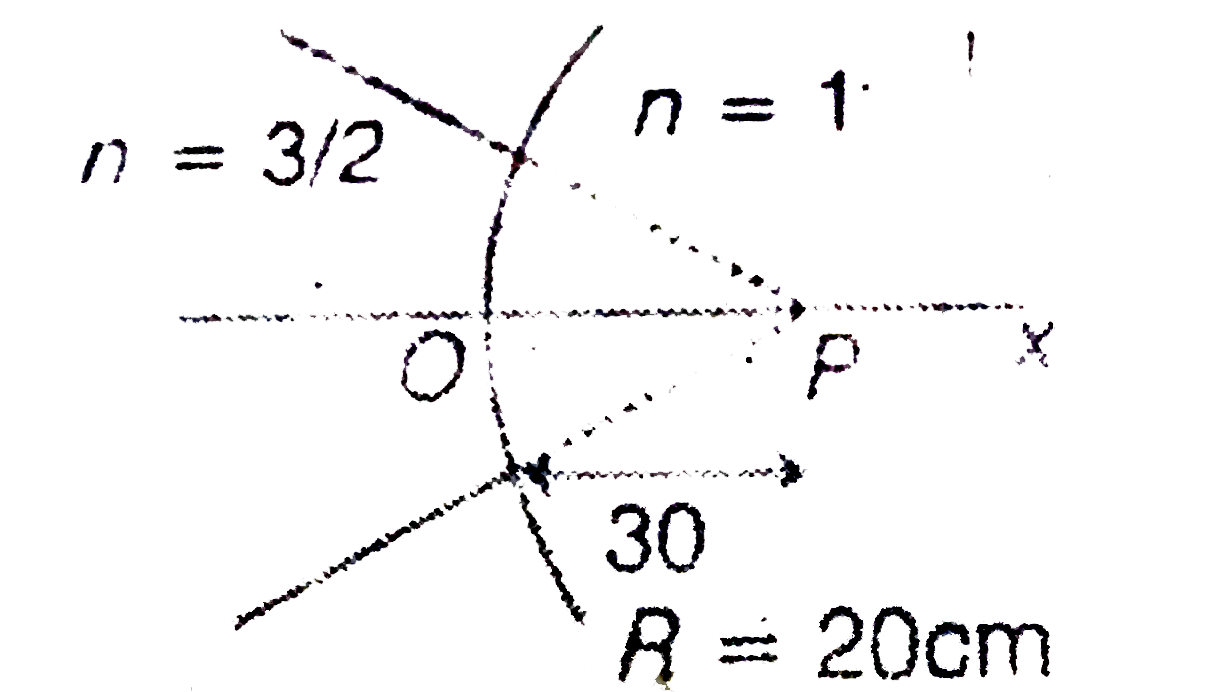 01:57View Solution
01:57View SolutionA convex-concave diverging lens is made of glass of refractive index 1.5 and focal length 24 cm. radius of curvature for one surface is double that of the other. Then radii of curvature for the two surfaces are (in cm )
02:37View SolutionIn the figure shown, there are two convex lenses `L_(1)` and `L_(2)` having focal. Lengths `f_(1)` and `f_(2)` respectively. The distance between `L_(1)` and `L_(2)` will be
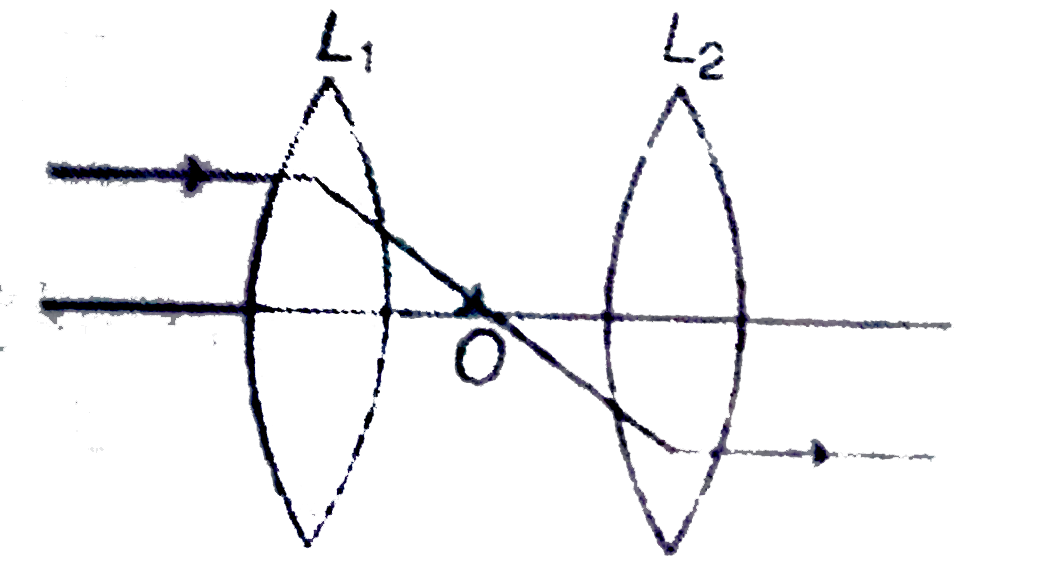 02:38View Solution
02:38View SolutionThe focal length of a plano-concave lens is -10 cm , then its focal length when its palne surface is polished is
10:31View SolutionA person walks at a velocity v in a straight line forming an angle `theta` with the plane of a plane mirror. With what velocity `v_(rel)` the apporaches his image ?
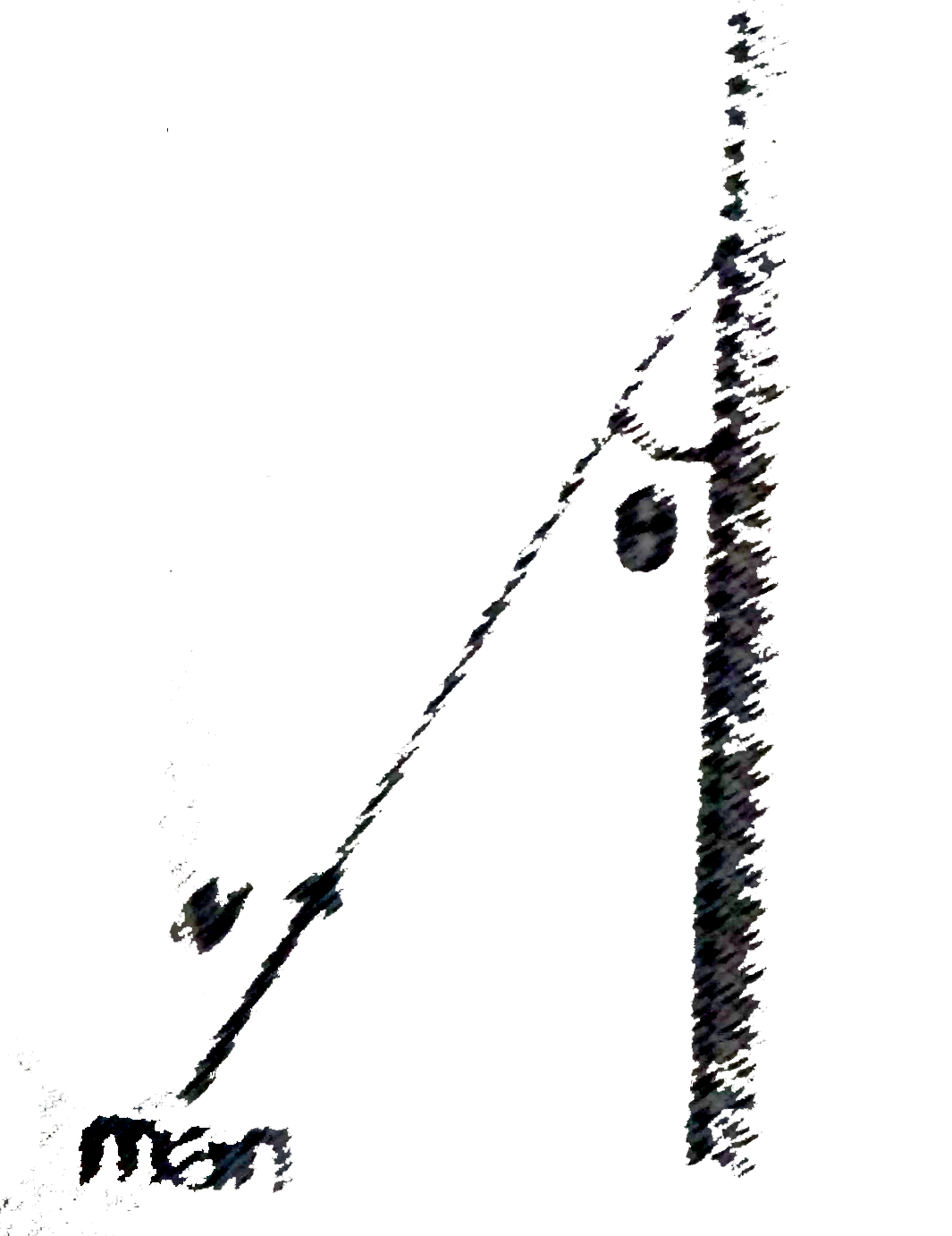 02:55View Solution
02:55View SolutionIn the figureshownm the image of a real object is formed at point I. AB is the principal axis of the mirror. The mirror must be
 02:42View Solution
02:42View SolutionA beam of light propagation through a medium -1 and falls onto another medium-2, at an angle `alpha_(1)` as shown. After that it propagates in medium -2 at an angle `alpha_(2)` as shown. The light's wavelength medium-1 is `lambda_(1)`. What is the wavelength of light medium -2 ?
 02:28View Solution
02:28View SolutionFigure shown the graph of angle of deviation `delta` verses angle of incidence I for a light ray striking a prism. The prism angle is
 02:28View Solution
02:28View SolutionA screen is placed 90 cm from an object. The image an object on the screen is formed by a convex lens two different locations separated by 20 cm. the focus length of the lense is
01:52View SolutionLight ray is incident on a prism of angle `A=60^(@)` are refractive index `mu=sqrt(2)`. The angle of incidence which the emergent rays grazes the surface is given
02:47View SolutionA ray of light is incident at an angle `alpha` on the boundary separating two transparant media. It transmited in other medium. If the angle incidence is increased very slightly, the ray gets reflected in the same medium. The different between angles of deviation in the two cases will close to
04:58View SolutionTwo plane mirrors are arranged at right angles to each other as shown in figure.A ray of light is incident on the horizontal mirror at an angle `theta`. For what value of `theta`the ray emerges parallel to the incoming ray after reflection from the vertical mirror ?
 02:57View Solution
02:57View SolutionCritical angle of glass is `theta_(1)` and that of water is `theta_(2)`. The critical angle for water and glass surface would be `(mu_(g)=3//2, mu_(w)=4//3)`
02:59View SolutionA hollow convex lens of glass will behave like a
02:51View SolutionA plane mirror is made of glass slab (`mu_(g)=1.5`) 2.5 cm thick and silvered on back. A point object is placed 5 cm in front of the unsilvered face of the mirror. What will be the position of final image ?
03:49View SolutionThe refractive index of a prism is 2. this prism can have a maximum refracting angle of
03:42View SolutionA ray of light undergoes deviation of `30^(@)` when incident on an equilateral prism of refractive index `sqrt(2)`. The angle made by the ray inside the prism with the base of the prism is
03:36View SolutionTwo identical glass `(mu_(g)=3//2)` equiconvex lenses of focal length `f` are kept ini contact. The space between the two lenses is filled with water `(mu_(w)=4//3)`. The focal length of the combination is
06:36View SolutionThe magnification of an object plac ed in front of a convex lens of focal length 20 cm is +2. to obtain a magnification of -2. the object will have to be moved a distance equal to
02:50View SolutionA cocave lens forms the image of an object such that the distance between the object and image is 10 cm and the magnification produced is 1/4. the focal length of the lens will be
02:26View SolutionA parallel beam of light is incident on the system of two convex lenses of focal length `f_(1)=20cm` and `f_(2)=10cm` . What should be the distance between the two lenses so that rays after refraction from both the lenses pass undeviated?
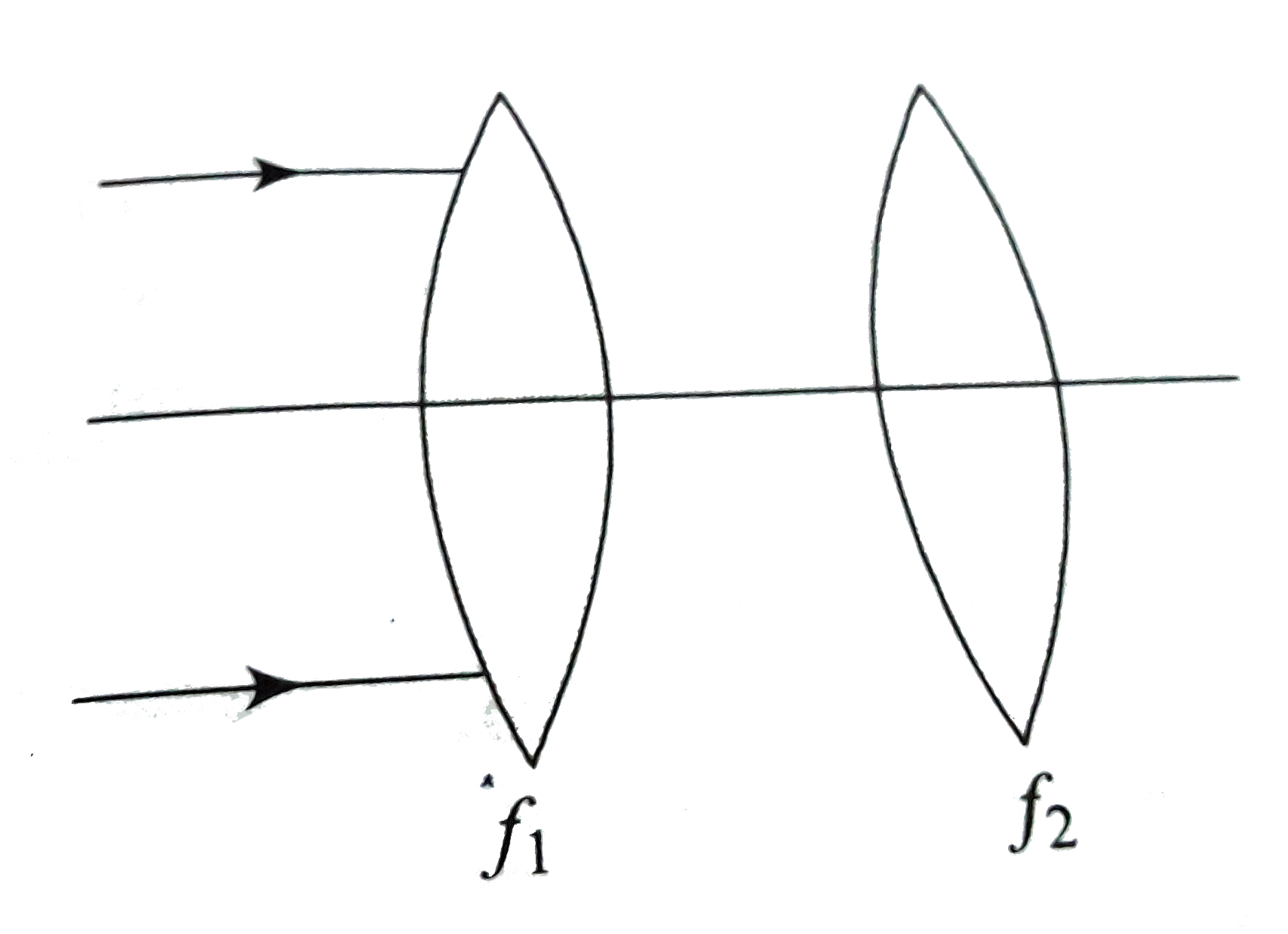 03:32View Solution
03:32View SolutionA point object is placed at a diatance of 25 cm from a convex lens of focal length 20 cm. If a glass slab of thickness t and refractive index 1.5 is inserted between the lens and the object, the image is formed at infinity. The thickness t is
02:36View SolutionThe angle of inductance for an equilateral prism is `60^(@)`. What should be the refractive index of prism so that the ray is parallel to the base inside the prism ?
01:47View SolutionWhen an object is at distances x and y from a lens, a real image and a virtual image is formed respectively having same magnification. The focal length of the lens is
03:02View SolutionIf the distances of an object and its virtual image from the focus of a convex lens of focal length f are 1 cm each, then f is
03:37View SolutionFocal length of a convex mirror is 10 cm
01:58View SolutionA concave mirror has a focal length 20 cm. The distance between the two positions of the object for which the image size is double of the object size is
03:01View SolutionTwo plane mirrors are inclined at angle `theta` as shown in figure. If a ray parallel to OB strikes the other mirror at P and finally emerges parallel to OA after two reflections then `theta` is equal to
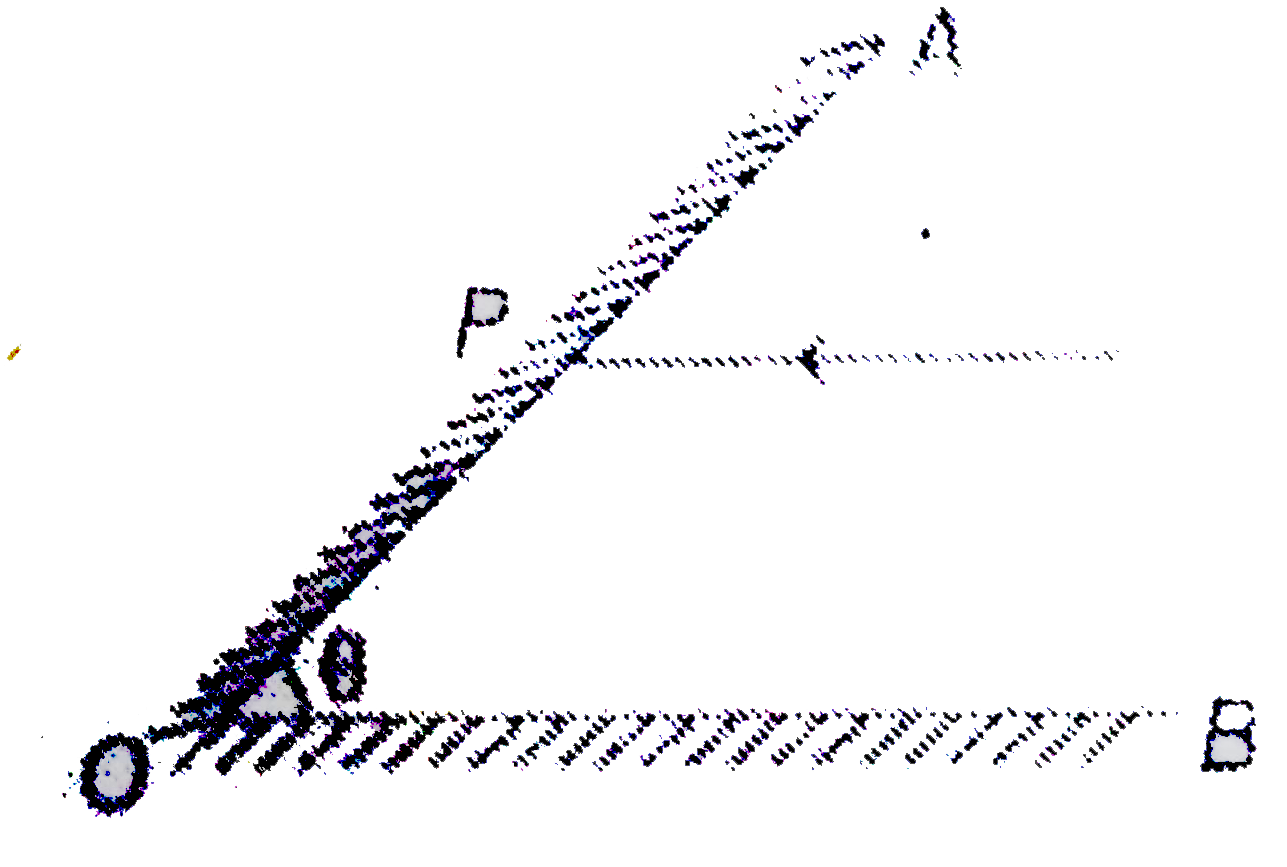 02:22View Solution
02:22View SolutionA ray of light falls on a transparent sphere with centre at C as shown in figure. The ray emerges from the sphere parallel to line AB. The refractive index of the sphere is
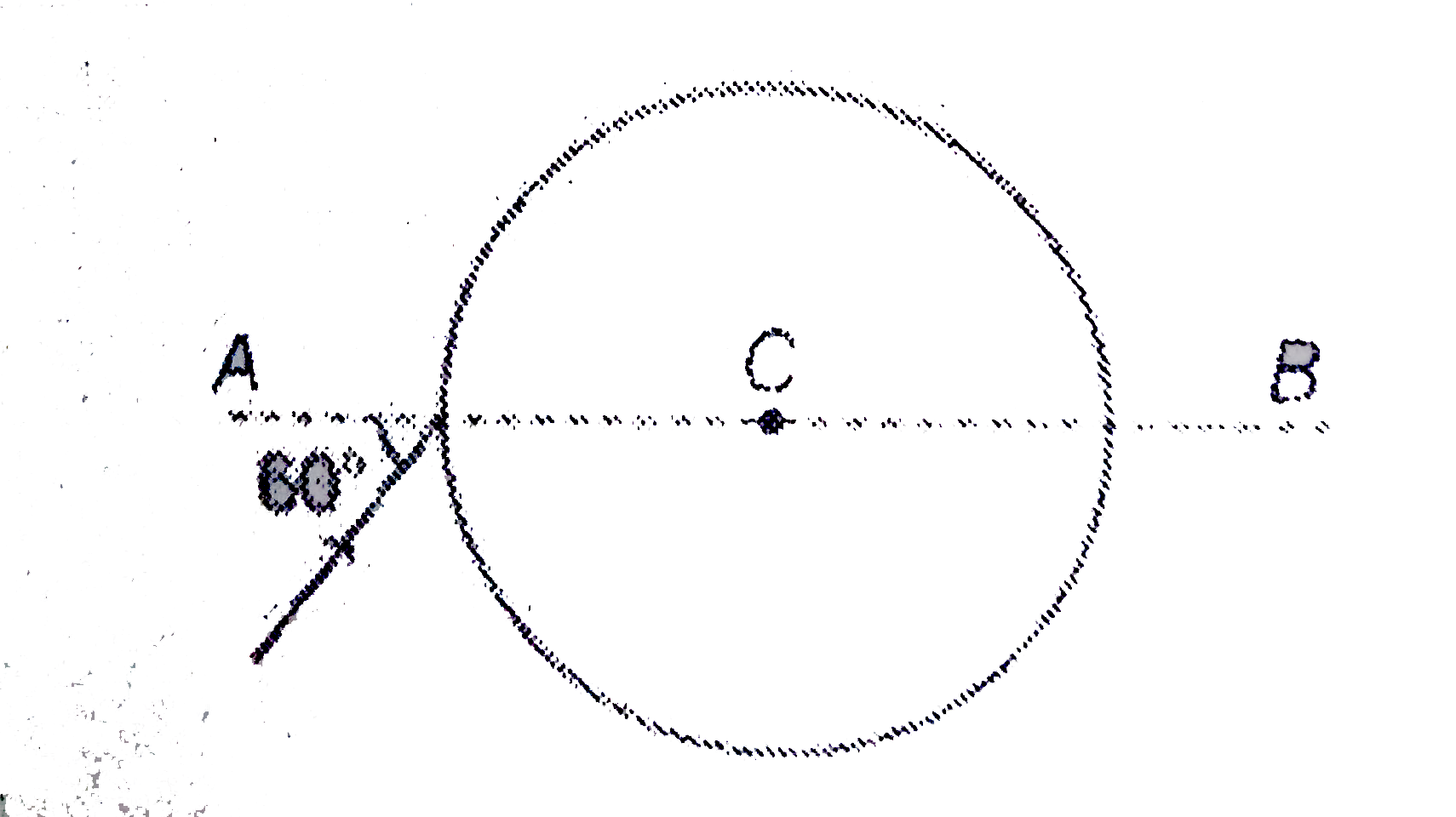 02:37View Solution
02:37View SolutionThe image of point P when viewed from top of the slabs will be
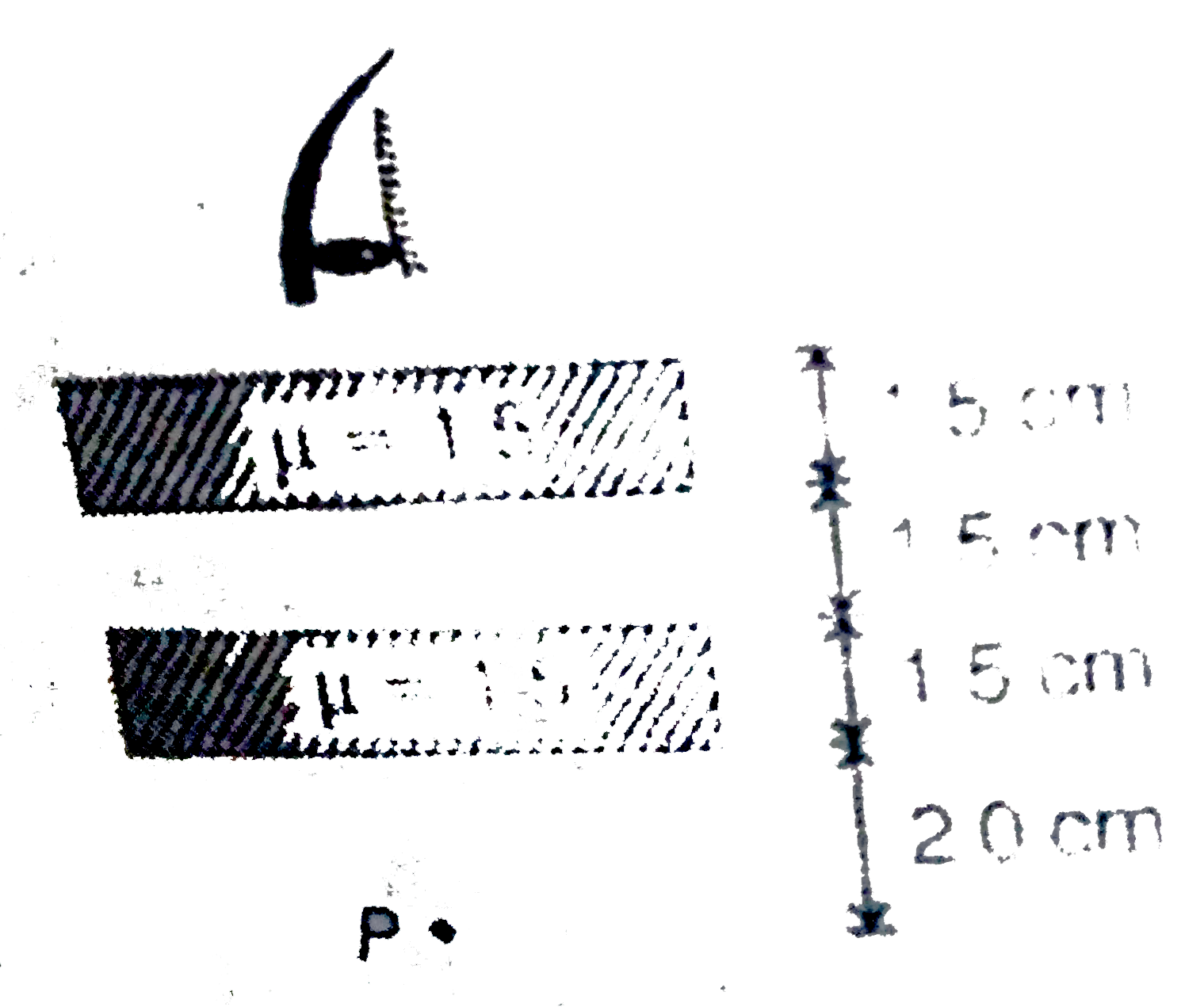 02:04View Solution
02:04View SolutionAn equiconvex lens of glass `(mu_(g) = 1.5)` of focal length 10 cm is silvered on one side. It will behave like a
06:17View SolutionFocal length of a thin convex lens is 30 cm. At distance of 10 cm from the lens there is a plan refracting surface of refractive index `3//2`. Where w the parallel rays incident on lens converge ?
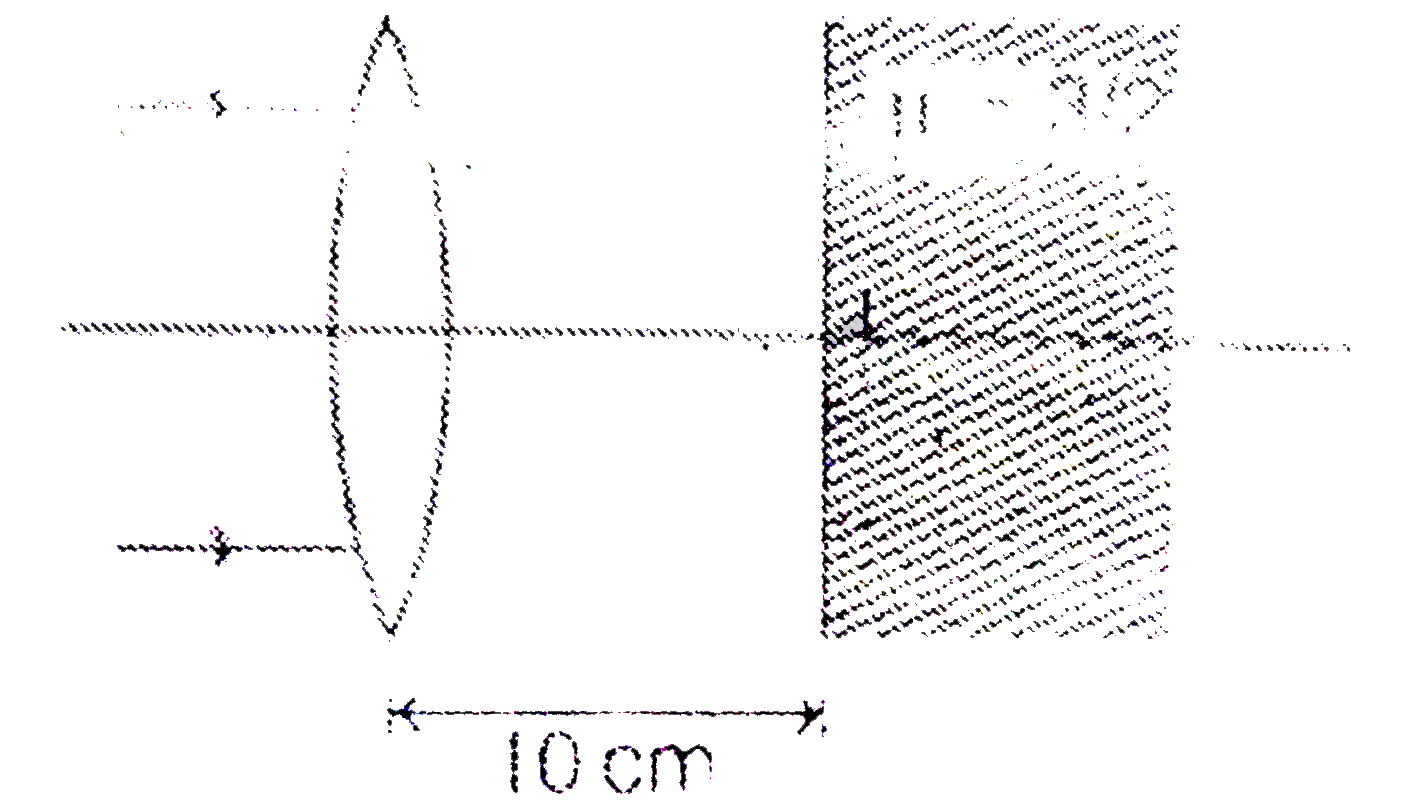 03:17View Solution
03:17View SolutionDistance of an object from the first focus of an equiconvex lens is 10 cm and the distance of its reimage from second focus is 40 cm. The focal length the lens is
03:22View SolutionAn object is placed in front of a concave mirror of focal length f as shown in figure. Choose the correct shape of the image.
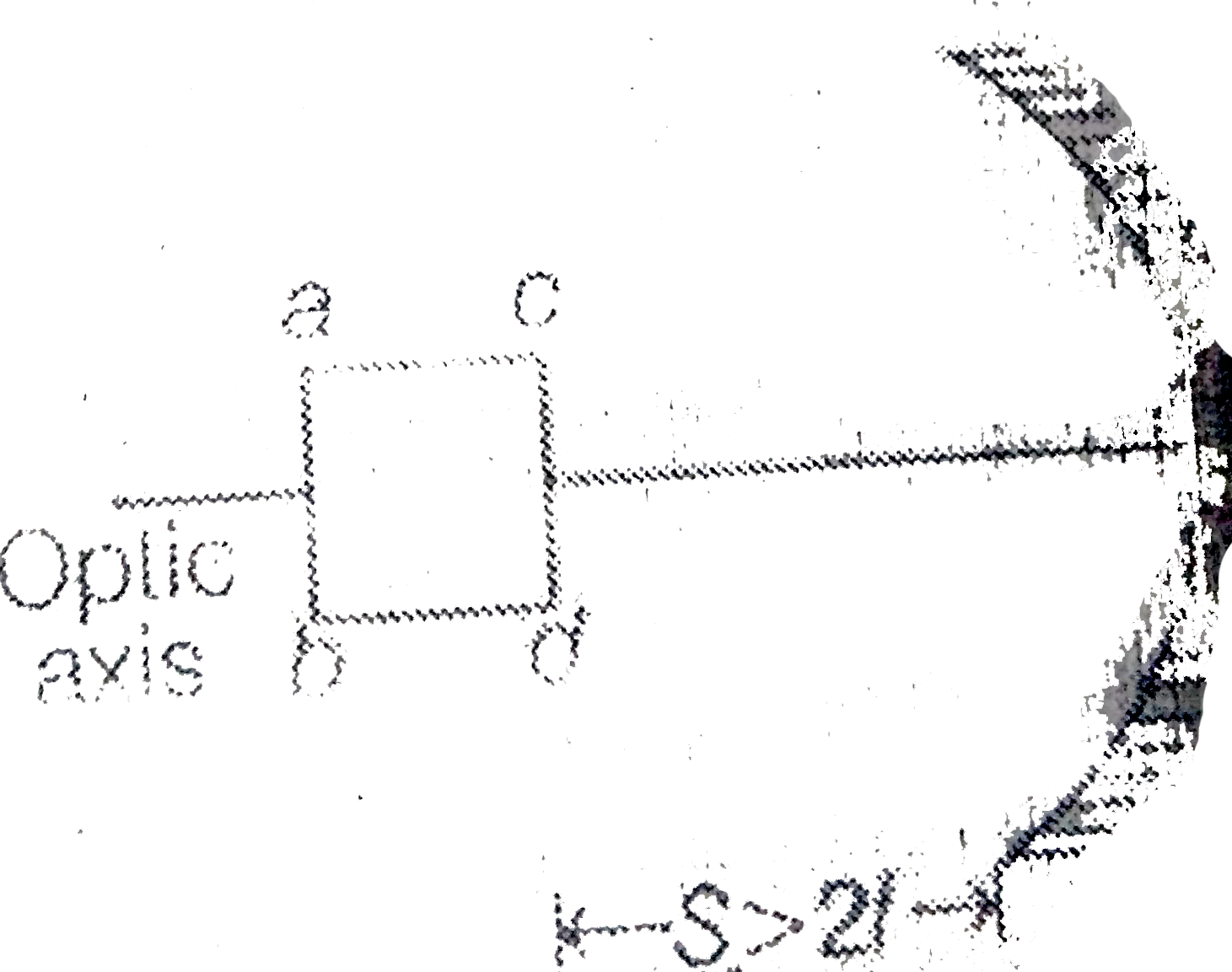 02:34View Solution
02:34View SolutionWhen a ray of light enters a glass slab from air
01:21View SolutionOne of the refracting surfaces of a prism of angle of `30^(@)` is silvered. A ray of light incident at an angle of `60^(@)` retraces its path. The refractive index of the material of prism is
01:51View SolutionAngle of minimum deviation is equal to the angle prism A of an equilateral glass prism. The angle incidence at which minimum deviation will be obtained is
01:31View SolutionIn the figure , a convex mirror of radius of curvature 20 cm is shown. An object O is placed in front of this mirror. Its ray diagram is shown. How many mistakes are there in the diagram (AB is its principal axis)
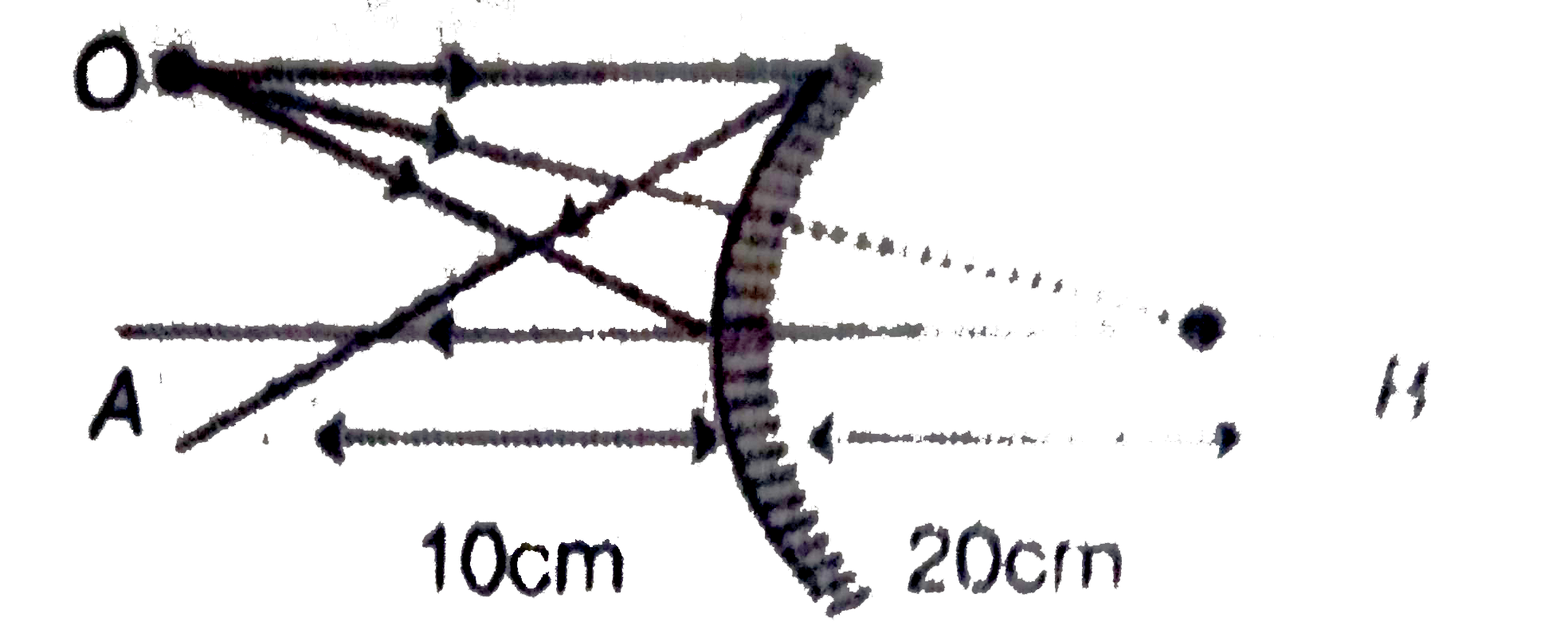 01:19View Solution
01:19View SolutionAs shown, a narrow beam of light is incident onto a semi-circular glass cylinder of radius R. Light can exit the cylinder when the beam is at the centre. When the beam is moved parallel to a maximum distance d from the central line, no light can exit the cylinder from its lower surface. Find the refractive index of the glass.
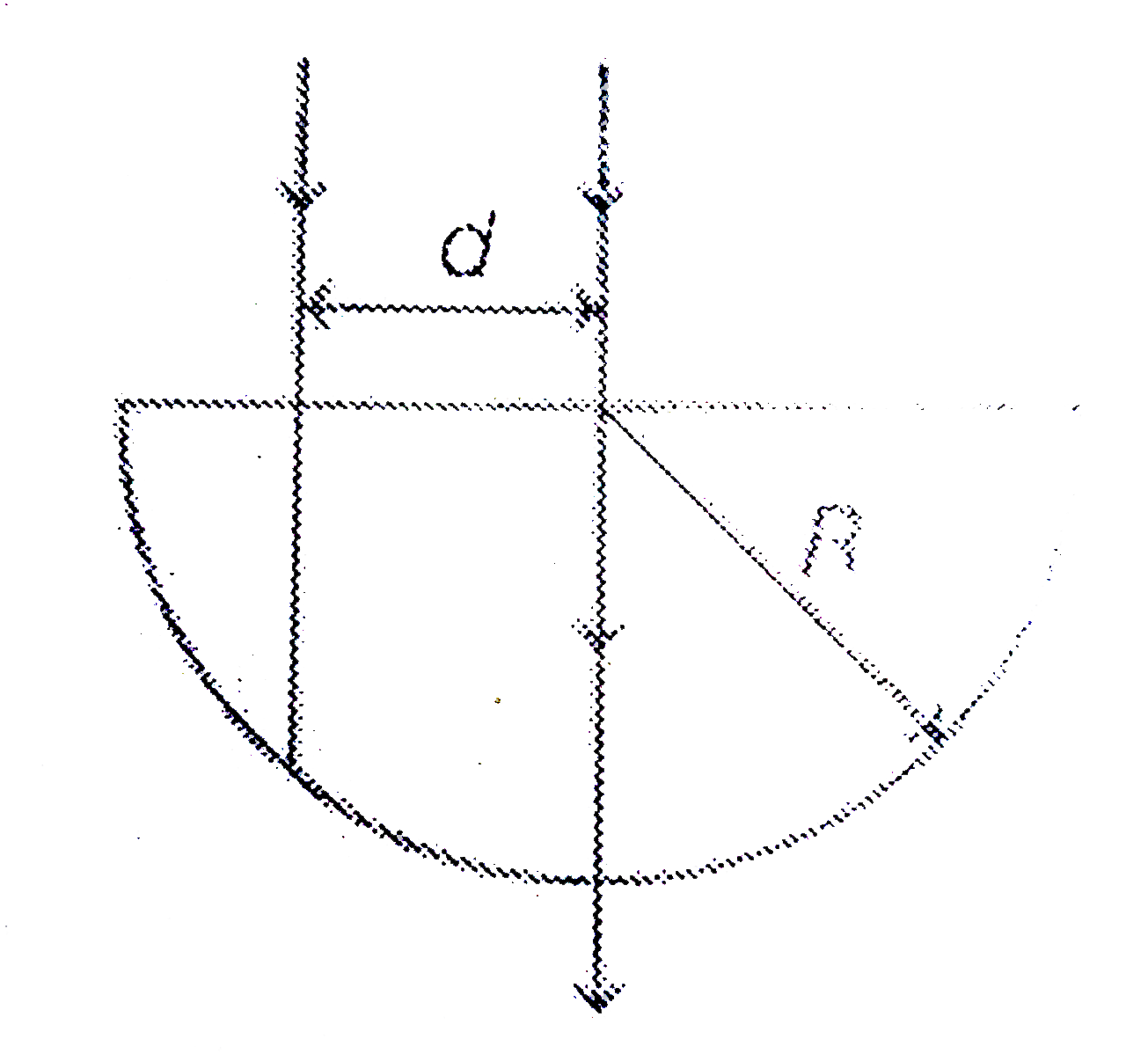 01:47View Solution
01:47View SolutionFigure shows graph of deviation `delta` versus angle of incidence for a light ray striking a prism. Angle of prism is
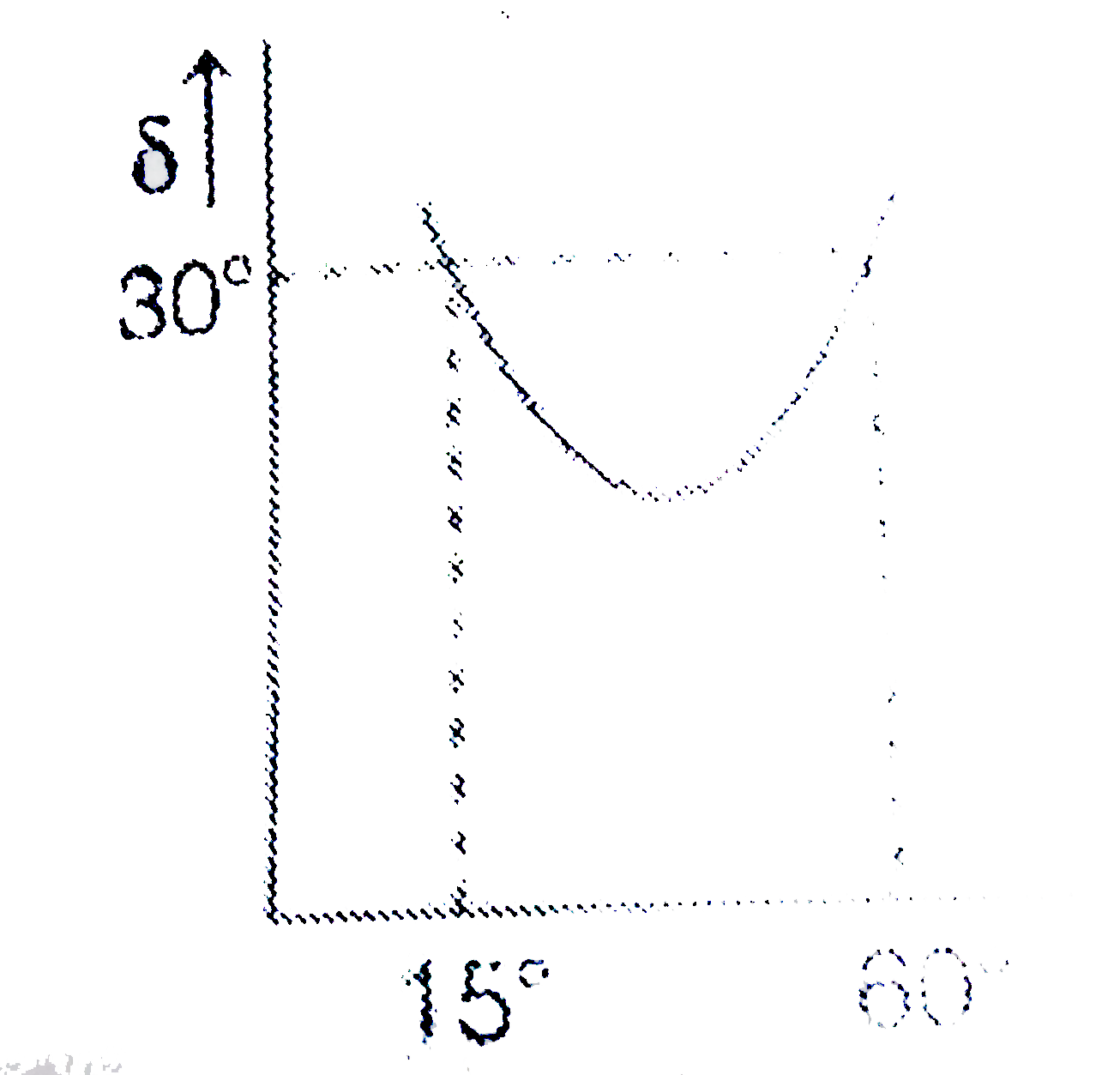 01:27View Solution
01:27View SolutionA convex lens of focal length 30 cm forms an image of height 2 cm for an object situated at infinity. If a concave lens of focal length 20 cm is placed coaxially at a distance of 26 cm from convex lens then size of image would be
06:28View SolutionLight travelling through three transparent substances follows the path shown in the figure. Assuming that total internal reflection does take place on the bottom surface of medium 2, arrange the refractive index in the increasing order.
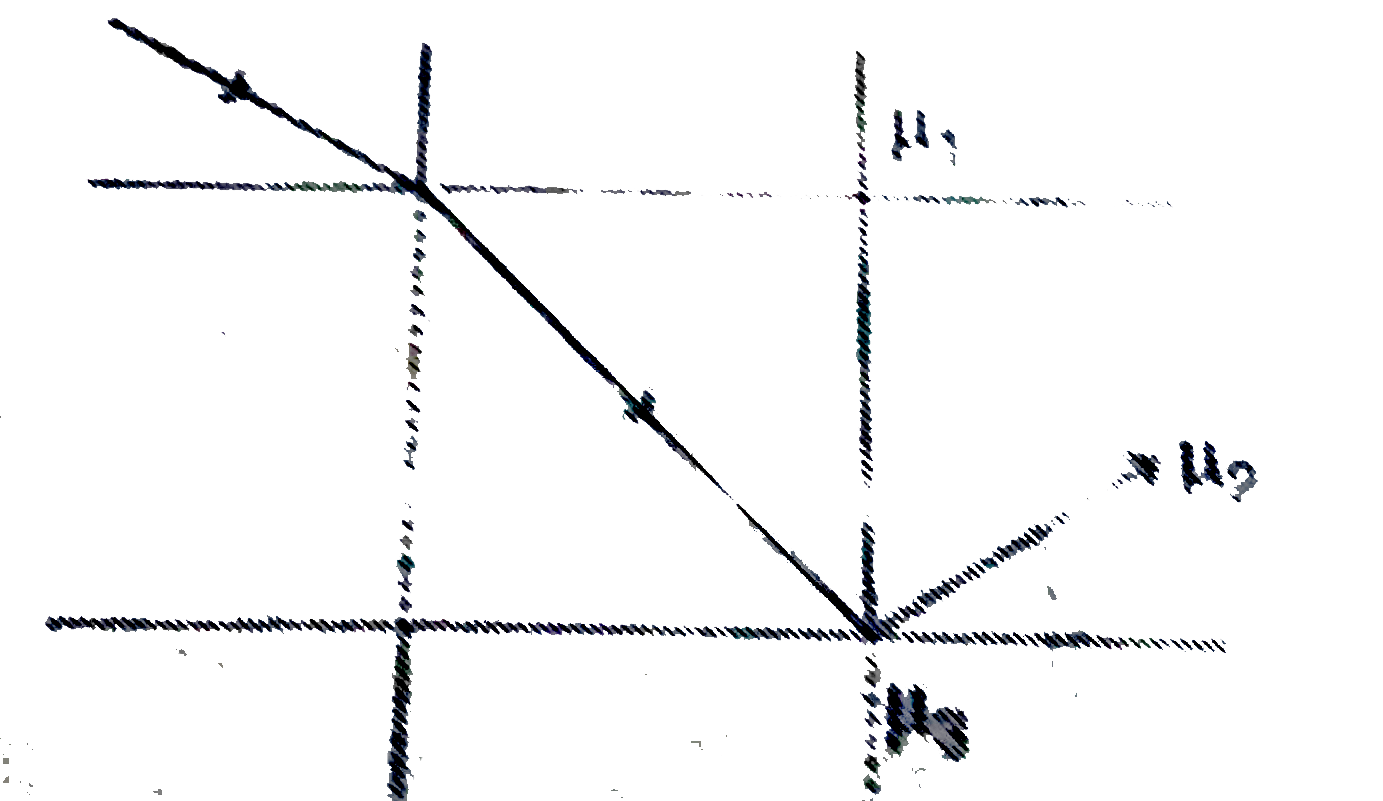 04:02View Solution
04:02View SolutionA plane wavefront AB is incident on a concave mirror as shown. Then,the reflected wavefront will be
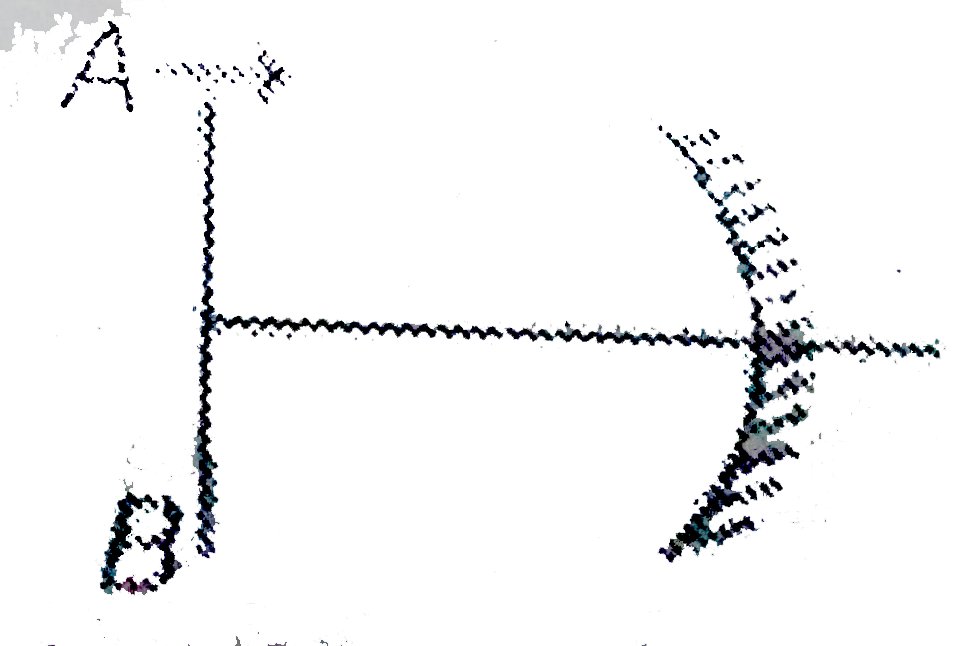 04:57View Solution
04:57View SolutionConsider the point P as the origin and time OP as the x-axis in the situation shown in the figure. Which of the following represents the coordinates of the image of the point object O. (Take `OP = 20 cm`)
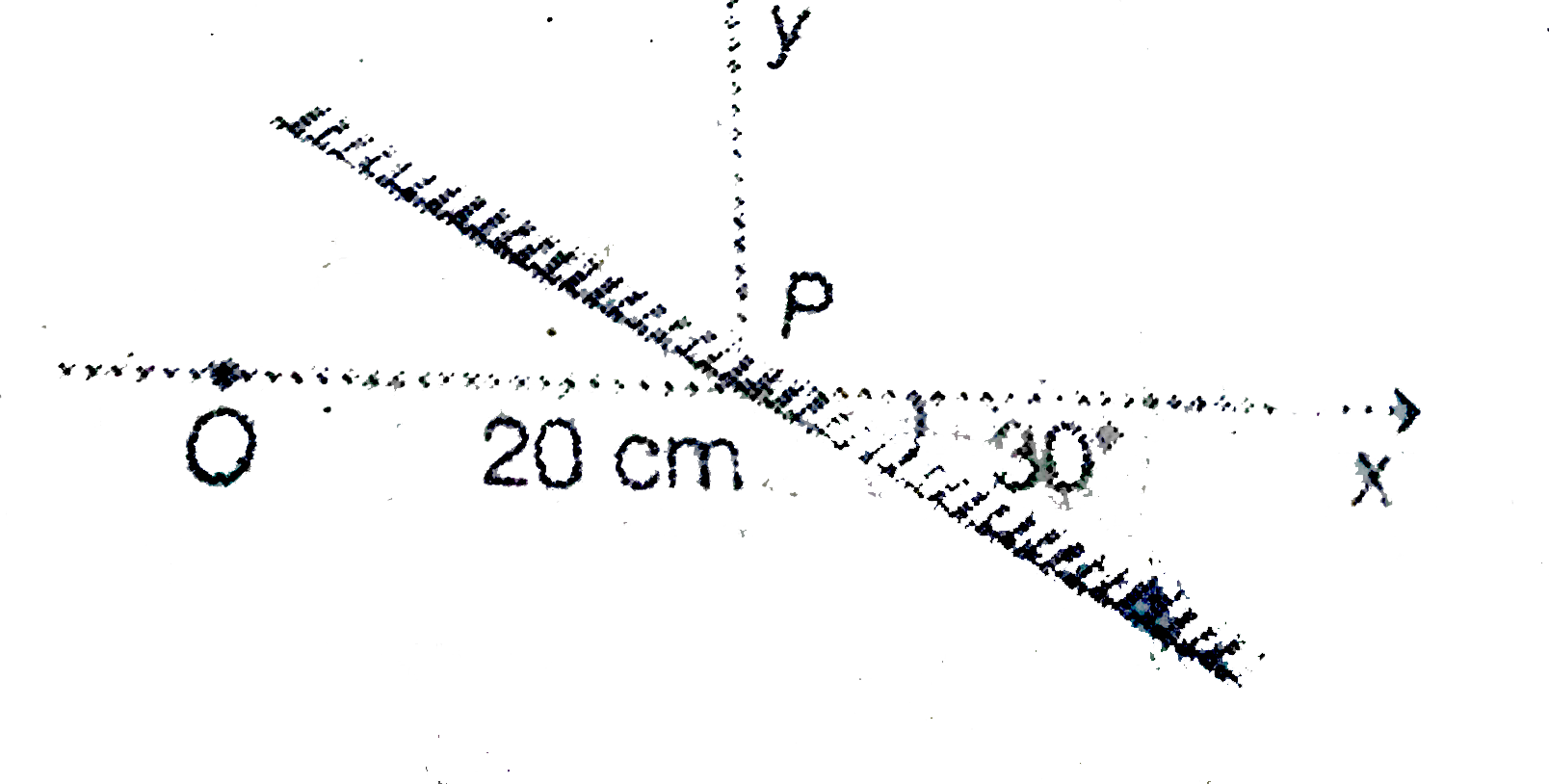 02:24View Solution
02:24View SolutionFor an equilateral prism, it is observed that when a ray strikes grazingly at one face, it emerges grazingly at the other face, its refractive index will be
02:17View SolutionAn optical instrument uses a 25 D objective and 20 D eyepeice with a tube length of 25 cm when eye is least strained
04:17View Solution
Only one option is correct(JEE Main) questions and complete solutions for chapter RAY OPTICS of DC PANDEY PHYSICS (HINGLISH) of Class 11
